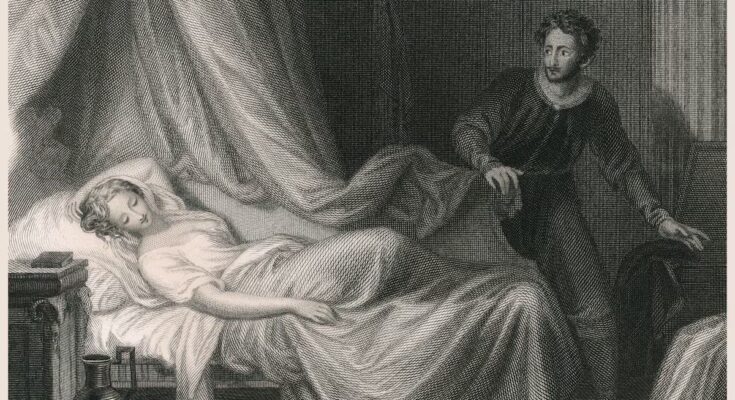Continuous sleep is a modern habit, not a natural fruit of our evolution. And that helps explain why many of us keep waking up at 3 a.m. and wondering if something is wrong. It may be helpful to know that this is a deeply human experience.
For much of human history, sleeping eight hours straight was uncommon. Instead, people rested in two shifts each night, often called “first sleep” and “second sleep.” Each of these periods lasted several hours, separated by a waking interval of an hour or more in the middle of the night. Historical records from Europe, Africa, Asia and elsewhere describe how, as night fell, families would go to bed early and then wake around midnight for a while before returning to sleep until dawn.
Dividing the night into two parts probably changed the perception of time. The interval of silence has given the nights a clear middle ground, which can make long winter afternoons seem less continuous and easier to bear.
The midnight interval was not dead time, but conscious time, which determined how the long nights are experienced. Some people got up to do tasks like stoking a fire or taking care of animals. Others remained in bed praying or reflecting on the dreams they had just had. Letters and diaries from the pre-industrial era mention that people took advantage of the quiet hours to read, write or even socialize quietly with family or neighbors. And many couples have taken advantage of this midnight awakening to have intimate relationships.
Literature as far back as Homer and Virgil contains references to “an hour that ends the first sleep,” indicating how common the two-shift night was.
How we lost the “second dream”
The disappearance of the second dream occurred in the last two centuries due to profound social changes. Artificial lighting is one of them. In the 18th and 19th centuries, oil lamps, gas lighting, and eventually electric light began to transform nighttime into a more usable waking time. Instead of going to bed shortly after sunset, people began to stay up later by the light of lamps.
Biologically, bright light at night also changed our internal clocks (our circadian rhythm) and made our bodies less likely to wake up after just a few hours of sleep. The timing of exposure to light is important. Normal light in a room before going to bed suppresses and delays melatonin, which in turn delays the onset of sleep.
The Industrial Revolution transformed not only how people worked, but also how they slept. Factory schedules encouraged a single block of rest. By the early 20th century the idea of eight uninterrupted hours had replaced the age-old rhythm of two sleep periods.
In weeks-long sleep studies that simulate long winter nights in the dark and do without clocks or evening light, people who participate often end up adopting two periods of sleep with a quiet interval of wakefulness. A 2017 study of a Madagascar farming community without electricity found that most people continued to sleep in two segments, waking around midnight.
Long, dark winters
Light regulates our internal clock and influences the speed with which we perceive the passage of time. When these signals fade, as in winter or under artificial light, we feel disoriented.
In winter, later and dimmer morning light makes circadian synchronization difficult. Morning light is especially important for regulating circadian rhythms because it contains a greater amount of blue light, which is the most effective wavelength for stimulating the body’s production of cortisol and suppressing melatonin.
In temporary isolation laboratories and cave research, the people studied lived for weeks without natural light or clocks, or even in constant darkness. Well, many people have been miscounting the days, which shows how easy it is to lose track of time without light signals.
Similar distortions occur in the polar winter, where the absence of sunrises and sunsets can make time seem suspended. Natives of high latitudes and long-term residents with stable routines tend to adapt better to polar light cycles than short-term visitors, but this varies by population and context. Residents adapt better when, for example, their community shares a regular daily schedule. And a 1993 study of the Icelandic population and their descendants who immigrated to Canada found that these people had unusually low rates of seasonal affective disorder in winter. The study suggested that genetics could help this population cope with the long Arctic winter.
Research conducted by the Environmental Temporal Cognition Laboratory at Keele University in England, of which I am director, shows how strong this link is between light, mood and perception of time. In 360-degree virtual reality, participants watched six clips featuring scenes from the UK and Sweden lasting around two minutes. These volunteers found the recordings to last longer in night or low-light scenes than in day or brighter scenes. The effect was more pronounced in participants who reported having a low mood.
A new perspective on insomnia
Sleep doctors point out that brief awakenings are normal and typically occur during phase transitions, including near-REM sleep, which is associated with vivid dreams. What matters is how we respond.
The perception of duration in the brain is elastic: anxiety, boredom or lack of light tend to lengthen time, while commitment and calm can compress it. Without that interlude where we usually get up and do something or chat with our partner, waking up at 3 a.m. often makes time pass slowly. In this context the focus is on the passage of time and the passing minutes may seem longer.
Cognitive behavioral therapy for insomnia (CBT-I) advises people to get out of bed about 20 minutes after waking up, do a quiet activity in low light, such as reading, and then return when they feel sleepy.
Sleep experts also suggest covering your clock and stopping timekeeping when you’re having trouble sleeping. Calmly accepting the waking state, together with understanding how our mind perceives time, can be the safest way to return to rest.
Darren Rhodes is Professor of Cognitive Psychology and Director of the Laboratory of Temporal Environmental Cognition, Keele University, Keele University.
This article was originally published in The conversation.



